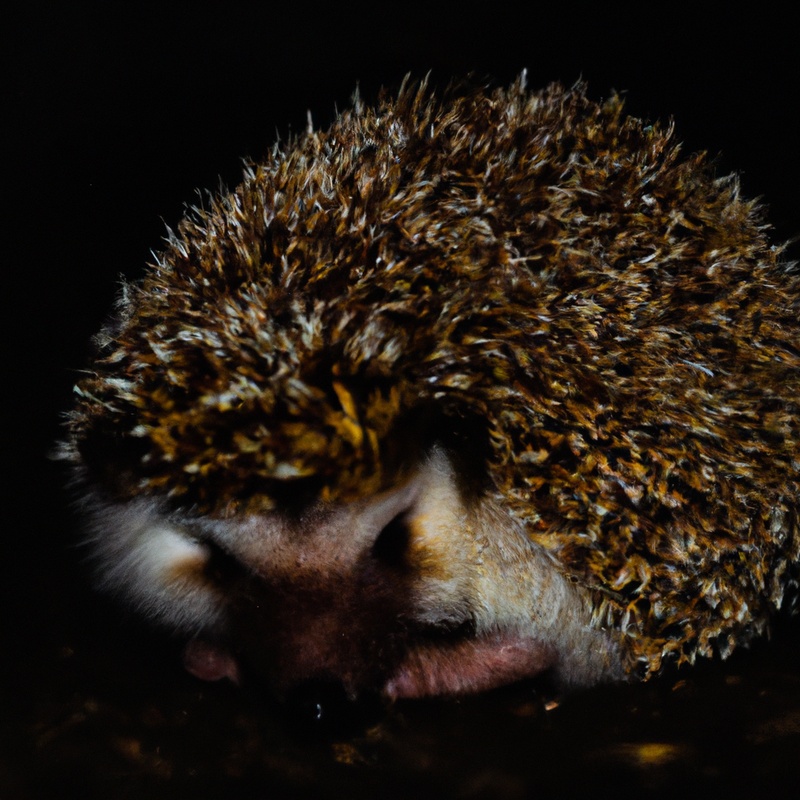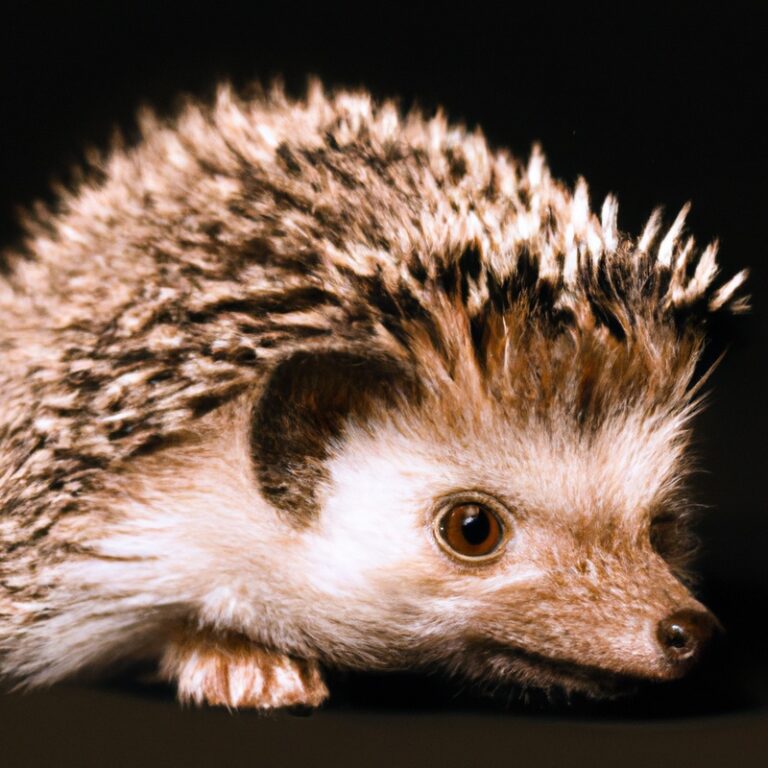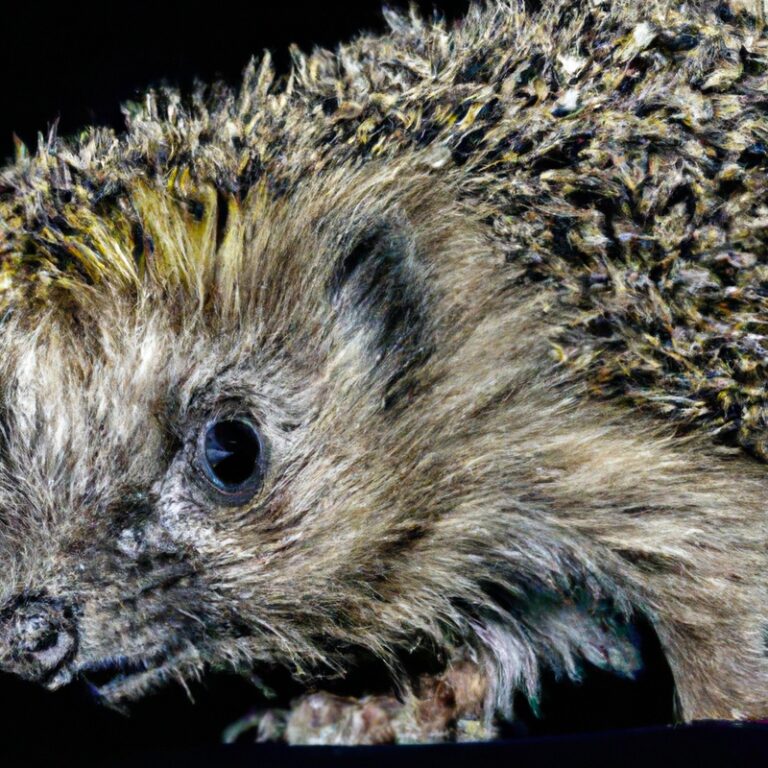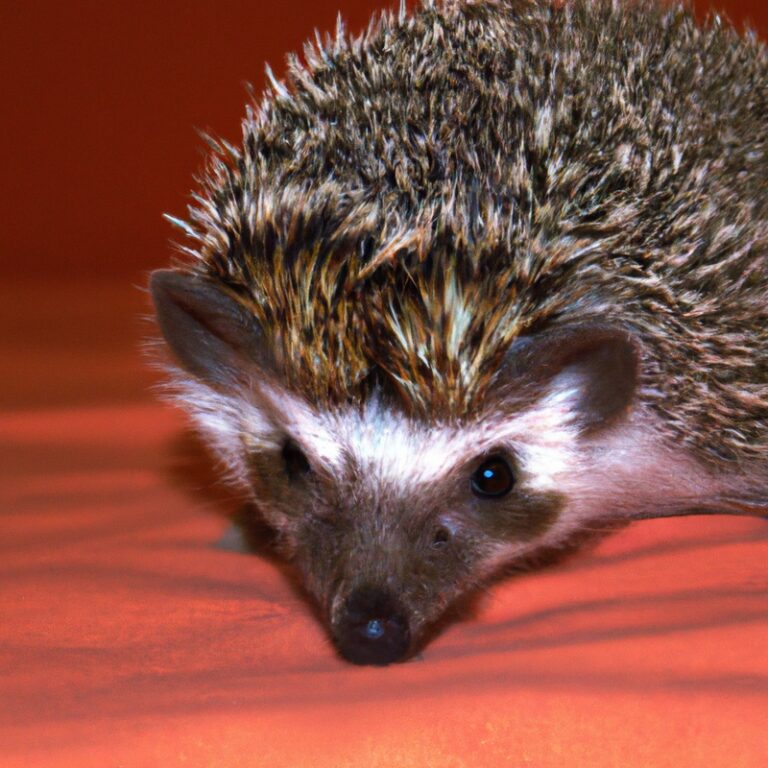How Do Hedgehogs Coexist With Other Wildlife?
Key Takeaways:
- Hedgehogs coexist with other wildlife by carving out their own territories.
- Hedgehogs benefit ecosystems by consuming harmful insects.
- The presence of hedgehogs indicates a healthy and diverse ecosystem.
- Human intervention and habitat preservation are crucial for hedgehogs’ coexistence with other wildlife.
Are you curious about how hedgehogs manage to peacefully coexist with other wildlife?
These prickly creatures have an important role to play in our ecosystems – and they do it in some surprisingly clever ways.
In this article, we’ll explore the fascinating world of hedgehogs, their unique diet and habitat preferences, and the impact they have on their environment.
We’ll also delve into the interactions they have with other wildlife species – both positive and negative.
Plus, we’ll share strategies for hedgehogs to coexist peacefully, discuss the challenges they face, and highlight conservation efforts aimed at protecting these adorable creatures.
So, let’s dive in and discover the secrets of hedgehogs’ coexistence with wildlife!
| Advantages | Disadvantages | |
| Habitat | Can adapt to diverse habitats | Need suitable hiding spots for protection |
| Food | Eat a variety of insects and pests | May compete with other small mammals for food |
| Predators | Protected by spiky quills | Vulnerable to larger predators |
| Behaviour | Generally peaceful and shy | Can be territorial and defensive |
| Reproduction | Give birth to multiple offspring | Offspring may suffer from predation |
Hedgehogs and their role in ecosystems
Hedgehogs play an important role in ecosystems by controlling pests and contributing to nutrient cycling through their diet and behaviors.
What are hedgehogs?
Hedgehogs are small, spiky mammals that belong to the Erinaceidae family. They are characterized by their sharp spines, which cover their back and sides, and their round bodies.
Hedgehogs are nocturnal creatures, meaning they are most active at night.
They have a varied diet, which typically includes insects, worms, snails, and small vertebrates. Hedgehogs are known for their ability to roll into a tight ball to protect themselves from predators.
They are also excellent climbers and swimmers.
Hedgehogs play an important role in ecosystems by helping to control populations of insects and other small creatures.

Hedgehogs’ diet and habitat preferences
Hedgehogs primarily eat a diet consisting of insects, slugs, worms, and other small invertebrates. They’re considered insectivores, so their diet is mainly focused on these creatures.
In terms of habitat preferences, hedgehogs are found in a variety of habitats such as woodlands, meadows, gardens, and even urban areas.
They like areas with plenty of cover, such as bushes or log piles, where they can make nests and find protection. Hedgehogs are adaptable creatures and can survive in different environments as long as they have access to food and suitable shelter.
Hedgehogs’ impact on ecosystems
Hedgehogs have a positive impact on ecosystems. They play a crucial role in controlling pest populations such as slugs and snails, which helps maintain a balanced ecosystem.
Additionally, their droppings provide nutrients that enrich the soil.
Hedgehogs also aid in seed dispersal by eating berries and spreading the seeds through their droppings. Overall, their presence contributes to the biodiversity and health of ecosystems.
Interactions between hedgehogs and other wildlife species
Hedgehogs interact with other wildlife species both positively and negatively, influencing the overall dynamics of their ecosystems.
Positive interactions between hedgehogs and other wildlife species
Hedgehogs have positive interactions with other wildlife species, contributing to a healthy ecosystem. One example is their role in controlling insect populations, reducing pests in gardens.
Additionally, hedgehogs create nests using leaves and grass, providing shelter for small mammals and birds.
Their droppings also enrich the soil, promoting plant growth. Overall, these interactions highlight the importance of hedgehogs in maintaining biodiversity and the balance of nature.

Negative interactions between hedgehogs and other wildlife species
Hedgehogs, while cute and beneficial, can have negative interactions with other wildlife species. One such interaction is competition for food.
Hedgehogs often eat the same insects that other wildlife, such as birds or bats, rely on for sustenance.
This competition can lead to a decrease in food availability for all species involved. Another negative interaction between hedgehogs and wildlife occurs during hibernation.
Hedgehogs sometimes share hibernation sites with other small mammals, which can lead to overcrowding and increased competition for limited space.
This can result in stress and potentially harm the survival of both hedgehogs and the other species involved. Additionally, hedgehogs are known carriers of certain diseases, such as ticks or fleas.
These parasites can not only harm hedgehogs but also impact other wildlife they come into contact with.
For example, if a hedgehog with ticks shares a habitat with other animals, the ticks can latch onto those animals and potentially spread diseases. It’s important to be aware of these negative interactions so that we can better understand the complexities of wildlife coexistence.
By studying and implementing conservation strategies, we can aim to minimize these negative interactions and promote a healthier and more balanced ecosystem for all species involved.
Strategies for hedgehogs to coexist with other wildlife
Strategies for hedgehogs to coexist with other wildlife include creating hedgehog-friendly gardens and providing alternative food sources. Additionally, avoiding the use of chemicals and pesticides is important for their coexistence.
Creating hedgehog-friendly gardens
To create a hedgehog-friendly garden, there are a few simple steps you can take.
First, ensure there are small gaps in fences and walls to allow hedgehogs to roam freely.
Secondly, provide shelter by leaving piles of leaves or logs in a quiet area.
Third, avoid using pesticides and chemicals that could harm hedgehogs or their food sources.
Finally, leave out shallow dishes of fresh water and provide a hedgehog house for them to hibernate in.
With these steps, you can create a safe and welcoming garden for hedgehogs to coexist with other wildlife.
Providing alternative food sources
To provide alternative food sources for hedgehogs and promote coexistence with other wildlife, you can:
- Leave a small area of your garden wild, allowing insects and invertebrates to thrive.
- Install a hedgehog house or shelter to encourage them to stay.
- Create log piles or leaf piles for hedgehogs to forage and find food.
- Avoid using pesticides and chemicals, as these can harm hedgehogs and their prey.
- Place shallow dishes of freshwater in your garden to ensure hedgehogs have access to water.
Avoiding the use of chemicals and pesticides
Using chemicals and pesticides can harm hedgehogs and other wildlife. To avoid this, opt for natural alternatives like biological controls or companion planting.
Regularly inspect plants for pests and manually remove them.
You can also create a wildlife-friendly garden by providing food, water, and shelter for beneficial insects, birds, and other animals that can help control pests naturally. Being mindful of the products you use in your garden can contribute to a safer and healthier environment for hedgehogs and other wildlife.
Challenges in hedgehogs’ coexistence with other wildlife
Hedgehogs face challenges in coexisting with other wildlife, including competition over resources, predation, and the effects of urbanization and habitat fragmentation.
Competition over resources
Competition over resources is a common challenge for hedgehogs when coexisting with other wildlife.
As they share habitats with various animals, they often have to compete for food, water, and shelter.
Hedgehogs primarily feed on insects and other small invertebrates, which can also be sought after by birds, small mammals, and reptiles.
Limited availability of these resources can lead to intense competition and potentially impact the survival of hedgehogs.
Additionally, conflicts may arise when hedgehogs compete for suitable nesting sites or hibernation spots.
Despite these challenges, hedgehogs have adapted various strategies to navigate through resource competition and find their own sustainable niche in the ecosystem.
Predation on hedgehogs
Predation on hedgehogs is a significant challenge they face in their coexistence with other wildlife. Hedgehogs have several natural predators, including foxes and badgers, who are known to hunt and prey on them.
Additionally, domestic pets like dogs and cats can also pose a threat to hedgehogs if they come into contact with each other.
The predation pressure on hedgehogs can impact their population numbers and overall survival. It is important to raise awareness about the risks hedgehogs face from predators and take measures to protect their habitats to ensure their long-term coexistence with other wildlife.
Urbanization and habitat fragmentation
Urbanization and habitat fragmentation pose significant challenges for hedgehogs and their coexistence with other wildlife.
As urban areas expand, natural habitats are destroyed or divided by roads, buildings, and fences.
This fragmentation restricts the movement of hedgehogs and disrupts their foraging and breeding patterns.
Additionally, urban environments often lack the necessary resources such as food and suitable nesting sites for hedgehogs.
These factors, combined with increased exposure to urban threats like traffic and predation, make it harder for hedgehogs to thrive in urbanized areas.
Conservation efforts and initiatives for hedgehogs’ coexistence
To promote hedgehogs’ coexistence, various conservation efforts and initiatives have been implemented, such as hedgehog rescue and rehabilitation organizations, public awareness campaigns and education, as well as government policies and regulations.
Hedgehog rescue and rehabilitation organizations
Hedgehog rescue and rehabilitation organizations play a crucial role in saving and rehabilitating injured or orphaned hedgehogs.
These organizations are dedicated to providing medical care, shelter, and a safe environment for hedgehogs to thrive.
They work tirelessly to rehabilitate hedgehogs and release them back into the wild when they are ready.
These organizations also educate the public about hedgehogs and their conservation, raising awareness about the importance of protecting these adorable creatures.
Without their efforts, many hedgehogs would not have a chance at survival.
Public awareness campaigns and education
Public awareness campaigns and education are essential for promoting the coexistence of hedgehogs with other wildlife.
These campaigns play a pivotal role in educating the public about the importance of creating suitable habitats and minimizing potential threats to hedgehogs.
By spreading knowledge about hedgehog behavior, diet, and the impacts of human activities, we can encourage responsible actions that protect these adorable creatures.
Public awareness campaigns also help to dispel myths and misconceptions surrounding hedgehogs, fostering a greater understanding and appreciation for their conservation.
Government policies and regulations
Government policies and regulations play a vital role in promoting the coexistence of hedgehogs with other wildlife.
These policies aim to protect natural habitats, ensure biodiversity, and reduce threats to hedgehogs.
They may include measures such as the creation of hedgehog-friendly spaces, conservation programs, and education campaigns.
By establishing and enforcing these regulations, governments demonstrate a commitment to preserving the rich diversity of wildlife and enabling hedgehogs to thrive alongside other species.
Frequently Asked Questions (FAQs)
How can I recognize hedgehog-friendly gardens?
To recognize hedgehog-friendly gardens, look for these signs:
- Provide safe access: Look for small holes or gaps at the bottom of fences or walls. Hedgehogs need spaces to move around freely.
- Use organic methods: Avoid using pesticides and chemicals that harm hedgehogs and their food sources.
- Create hiding places: Offer piles of leaves, logs, or compost heaps as shelter for hedgehogs to nest and hibernate.
- Provide food and water: Hedgehogs love to eat insects, slugs, and worms. Leave out dishes of fresh water and avoid feeding them bread and milk.
- Avoid harmful obstacles: Ensure there are no steep-sided ponds or deep holes that hedgehogs could fall into.
Can hedgehogs harm other wildlife?
Hedgehogs generally do not harm other wildlife.
In fact, they often play a beneficial role in ecosystems.
Hedgehogs mainly consume insects, slugs, and snails, helping to control their populations.
They are unlikely to pose a threat to larger animals, such as birds or mammals.
Their quills provide protection against potential predators, but they are not typically used for offensive purposes.
Overall, hedgehogs are more likely to coexist peacefully with other wildlife rather than cause harm.
What should I do if I find an injured hedgehog?
If you find an injured hedgehog, here’s what you can do:
- Gently pick it up using gloves or a towel to protect yourself and the hedgehog.
- Place it in a secure box with air holes and line it with a soft and warm material, like a fleece or towel.
- Keep the box in a quiet and dark area to reduce stress for the hedgehog.
- Avoid offering food or water as it can harm the hedgehog. Instead, seek help from a local wildlife rescue or veterinarian.
Final Verdict
Hedgehogs play a valuable role in ecosystems and their interactions with other wildlife can have both positive and negative effects. Strategies for hedgehogs to coexist peacefully with other species include creating hedgehog-friendly gardens, providing alternative food sources, and avoiding the use of chemicals and pesticides.
However, challenges such as competition over resources, predation, and habitat fragmentation exist.
Conservation efforts through rescue organizations, public awareness campaigns, and government policies are crucial for ensuring the long-term coexistence of hedgehogs and other wildlife. By implementing these strategies and supporting conservation initiatives, we can help safeguard the delicate balance of our ecosystems.







